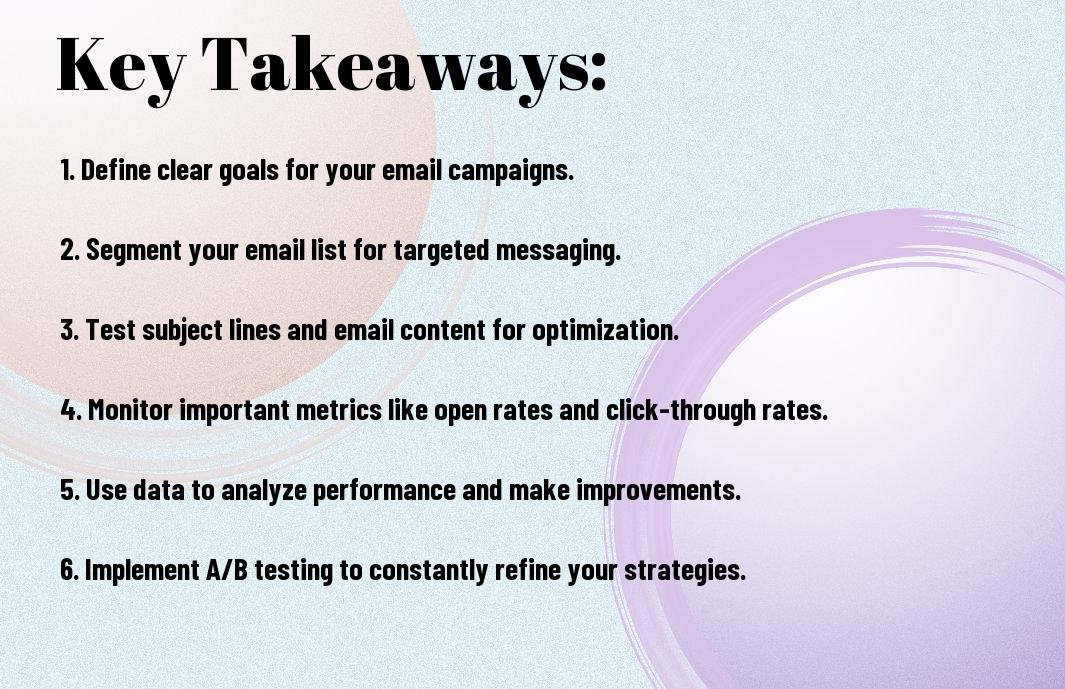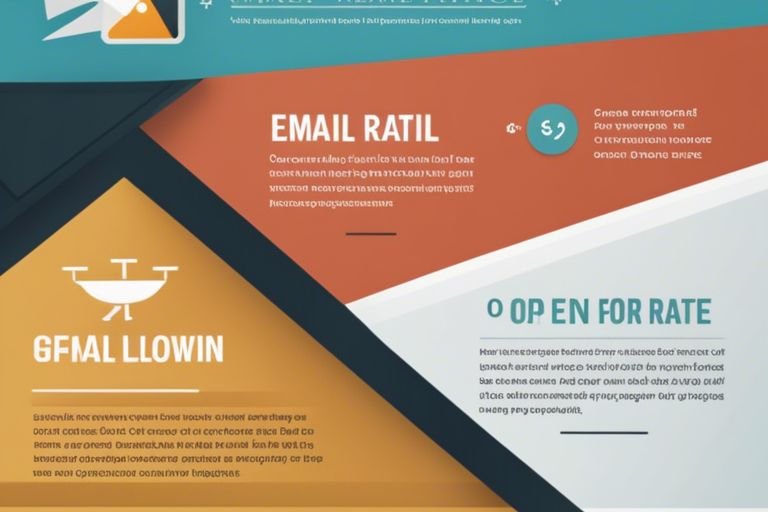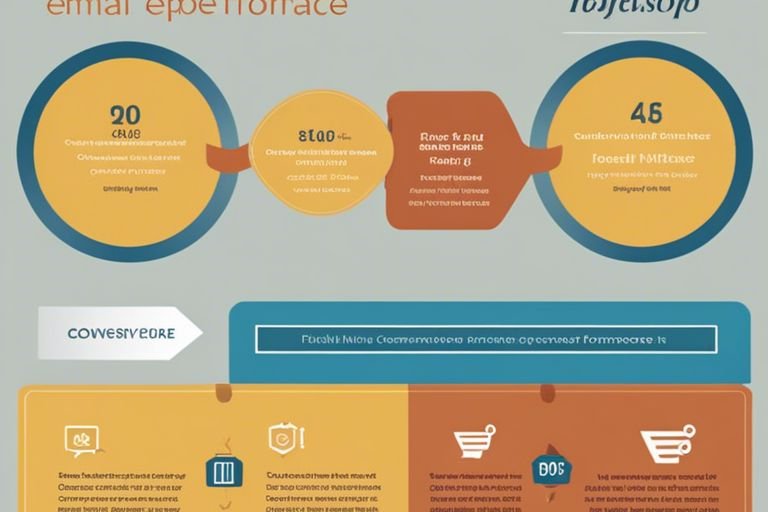Email campaigns are a crucial marketing tool for businesses, but without proper analysis and optimization, their effectiveness can fall short. This comprehensive template is designed to help you analyze and improve the performance of your email campaigns. By identifying weaknesses and capitalizing on strengths, you can maximize the impact of your email marketing efforts. Let’s look into the key metrics and strategies that will drive your campaign to success.

Key Takeaways:
- Track Key Metrics: Monitor important metrics such as open rates, click-through rates, conversion rates, and bounce rates to evaluate the effectiveness of your email campaigns.
- Segment Your Audience: Divide your email list into specific segments based on demographics, behavior, or interests to deliver more personalized and targeted content.
- Experiment with A/B Testing: Test different elements like subject lines, call-to-action buttons, and images to optimize your emails for higher engagement and conversion rates.
- Optimize for Mobile: Ensure your emails are mobile-responsive and easy to read on various devices, as a significant portion of users access their emails on smartphones and tablets.
- Continuous Improvement: Regularly analyze your email campaign performance, learn from the data insights, and make adjustments to continually improve and refine your strategies for better results.

Fundamentals of Email Campaign Metrics
Key Performance Indicators (KPIs)
Now, when it comes to measuring the success of your email campaigns, focusing on the right Key Performance Indicators (KPIs) is necessary. These KPIs, including open rates, click-through rates, conversion rates, and unsubscribe rates, provide valuable insights into the performance of your email campaigns.
Understanding Email Analytics Tools
Email analytics tools are crucial for tracking and analyzing the performance of your email campaigns. To make informed decisions and optimize your email marketing efforts, it is necessary to leverage these tools effectively. They provide detailed metrics on engagement, deliverability, and audience behavior.
To research deeper into understanding email analytics tools, marketers can use platforms like Google Analytics, Mailchimp, or HubSpot, which offer comprehensive reports on email campaign performance. These tools help track the success of your campaigns in real-time and provide actionable insights to enhance future email strategies.
Analyzing Email Campaign Data
To Free Email Marketing Report Templates & How-To, analyzing email campaign data is crucial for understanding the performance of your email marketing efforts. By examining key metrics and patterns, you can gain valuable insights that will help you optimize future campaigns and drive better results.
Data Collection Techniques
Techniques for collecting email campaign data may include tracking open rates, click-through rates, conversion rates, bounce rates, and unsubscribe rates. Utilizing tools like Google Analytics or email marketing platforms can provide detailed reports on user behavior and campaign performance.
Identifying Patterns and Trends
Data analysis is crucial for identifying patterns and trends in your email campaign performance. By analyzing metrics over time, you can identify what strategies are working well and which ones need improvement. Look for patterns in subscriber engagement, such as peak open times or popular content topics, to tailor future campaigns for success.

Strategies for Improvement
A/B Testing Methodologies
Testing various elements of your email campaigns through A/B testing is crucial for optimizing performance. By sending two versions of an email to a subset of your audience and analyzing which one performs better, you can determine the most effective strategies to implement in your overall campaign.
Best Practices for Enhanced Engagement
For maximizing engagement with your email campaigns, consider personalizing content based on user preferences, segmenting your audience, and optimizing send times. These practices can lead to higher open rates, click-through rates, and overall campaign success.
Plus, ensuring that your emails are mobile-responsive and easy to read will further boost engagement and conversion rates.

Action Plan Development
Setting Realistic Goals
Any successful email campaign starts with setting realistic and achievable goals. Make sure your goals are specific, measurable, achievable, relevant, and time-bound (SMART). Consider factors like your industry benchmarks, past email performance, and the objectives of the current campaign when setting your goals. This will help you track progress effectively and make necessary adjustments along the way.
Implementing Changes and Monitoring Progress
The key to improving email campaign performance lies in making strategic changes and closely monitoring the progress. The implementation of changes could include adjusting email content, subject lines, send times, or targeting criteria based on the data and insights gathered. Monitoring progress involves consistently analyzing key performance indicators like open rates, click-through rates, conversion rates, and other relevant metrics to ensure continuous improvement.
Final Words
The Template for Analyzing and Improving Email Campaign Performance is a powerful tool that can help you assess the effectiveness of your email marketing efforts. By examining key metrics such as open rates, click-through rates, and conversion rates, you can identify areas for improvement and make data-driven decisions to optimize your campaigns. Remember to regularly review and adjust your strategies based on the insights gained from this template to ensure your email campaigns remain impactful and successful.
FAQ
Q: What is the importance of analyzing email campaign performance?
A: Analyzing email campaign performance is crucial as it helps in understanding the effectiveness of your email marketing efforts, identifying areas for improvement, and maximizing ROI.
Q: Which key metrics should be considered when analyzing email campaign performance?
A: Key metrics to consider include open rate, click-through rate, conversion rate, bounce rate, unsubscribe rate, and overall ROI.
Q: How can one improve email campaign performance based on analysis?
A: By analyzing data, one can optimize subject lines, content, send times, segmentation, personalization, and CTAs to improve email campaign performance.
Q: What tools can be used to analyze email campaign performance?
A: There are several tools available such as Google Analytics, Mailchimp Analytics, Campaign Monitor, and HubSpot that can help in analyzing email campaign performance.
Q: How often should one analyze email campaign performance?
A: It is recommended to analyze email campaign performance regularly, ideally after each campaign, to track progress, make timely adjustments, and ensure continued success in email marketing efforts.
Recent Posts
Affiliate Offer Goldmine: How I Find Profitable Affiliate Offers
Affiliate marketing can be overwhelming if you rely on guesswork or follow generic advice. I've discovered that most beginners waste time promoting overcrowded, untested, or unprofitable offers. In...
As an affiliate marketer, you know how crucial it is to create engaging and effective blog posts that drive traffic and generate sales. But coming up with fresh and profitable ideas can be a...

